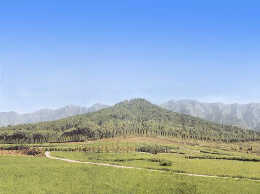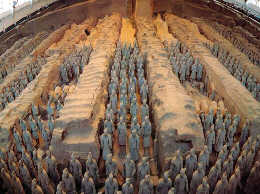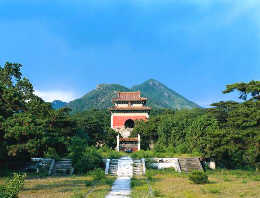5. Life, death, and Chinese view on nature

The Tomb of the First Qin Emperor

Terra Cotta Warriors, Pit 1
The ancient Chinese people believed that the soul is immortal, and that after death, people continue to live in a fashion very similar to life on earth. The burial chamber was thought to be the location of this "life after death." This conception gave rise to the Chinese tradition of lavish interments. The tombs of emperors, in particular, were constructed as complete underground worlds, filled with an extensive and luxurious selection of items for use by the deceased.
The tomb of Qinshi Huangdi, the FirstQin Dynasty(221-206BC) Emperor who unified China in 221 BC, is the most famous example. This massive underground citycovers a total area of 56.25 square kilometers. To date, only a fraction of it has been excavated. The pits containing the famous army of terra cotta warriors and horses represent merely a small corner of the entire complex.

Ming Tombs
TheMing Dynasty(1368-1644) Tombs are the most complete and best-preserved imperial tomb complex in the world, consisting of temples as well as mausoleums. The aboveground section includes large palaces that were used for sacrificial rituals. The Ming Tombs were laid out and constructed based on the doctrines of traditional Chinese fengshui, or geomancy. Every element of the complex is in complete harmony with the surrounding mountains, rivers, and vegetation, embodying the philosophical principle of the Unity of Heaven and Humanity.
